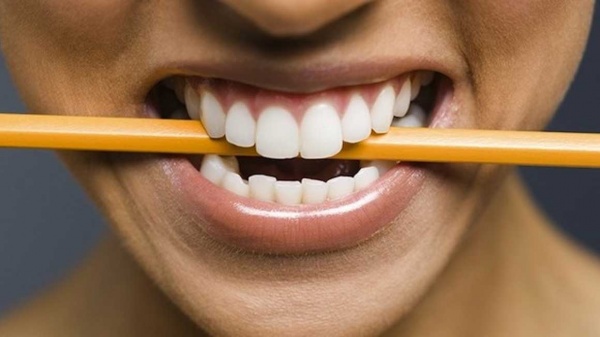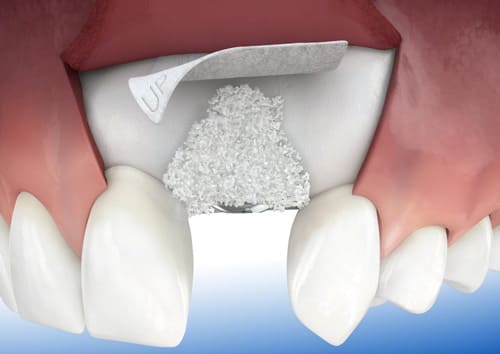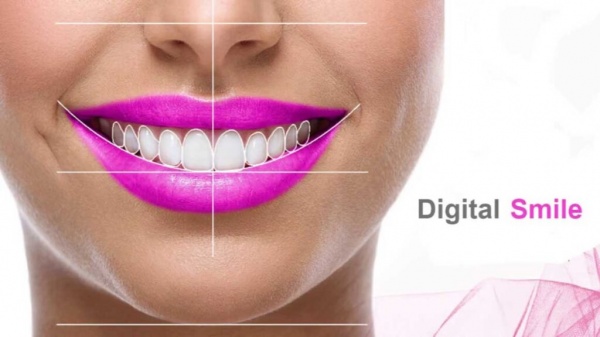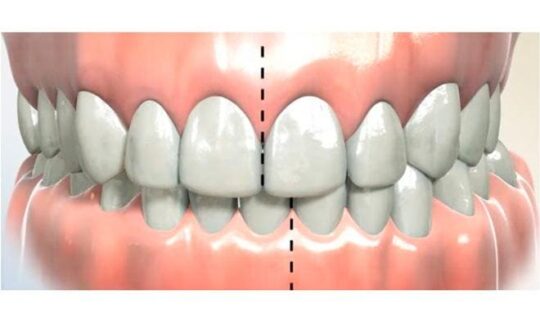Names of teeth:
- Incisors - located in the center, 4 on top and 4 on the bottom. Designed for biting, have a flat shape and sharp edges. The incisors are called "ones" and "twos".
- Fangs - located immediately behind the incisors. Fangs are needed for biting through tough food, so they have a long root, a special conical shape and a pointed edge. They are called triplets.
- Premolars - grow immediately behind the canines, two on each side. These are fours and fives. Premolars are chewing teeth.
- Molars are powerful chewing teeth. These are "sixes", "sevens" and "eights".
This is a simplified system. The teeth are numbered according to their location relative to the center of the jaw. However, for greater information content, you must also specify the right and left sides, as well as the top and bottom.
Tooth numbering systems
Several numbering systems are known. The numbering of teeth in children is different. Numbers are assigned to both permanent and milk teeth, and even those that have not yet erupted.
Tooth numbering systems:
- European system Viola. Numbering starts from the center of the jaw. Numbers consist of two digits. The first number indicates the side of the jaw, the second is the number of the tooth on that side. Numbers 11 to 18 designate the teeth of the right side of the upper jaw. 21-28 - teeth of the upper jaw on the left. 31-38 - teeth of the lower jaw on the left. 41-48 - teeth of the lower jaw to the right of the center. To "account" children's teeth, the first number is 5 or 6 when it comes to the upper teeth. 7 or 8 - if they mean the lower teeth.
- American alphanumeric system. The countdown starts from the third molar. Next - clockwise. In addition to numbers, letters are used in the designation of teeth: I - incisors, C - canines, P - premolars, M - molars. Milk teeth are indicated in small Latin letters.
- Zsigmondy-Palmer square-digital system. Numbering starts from the center. The position of the tooth is indicated graphically - a corner above or below the number. Milk teeth are designated by Roman numerals. Permanent - Arabic.
- Haderup system. Numbering is from the center. The upper teeth are marked with a “+” sign, and the lower ones with a “-” sign. If the sign is to the right of the number, then they are talking about the teeth located on the right side. If on the left - about the teeth on the left side. In the designation of milk teeth according to the Haderup system, first put 0, and then the number of the tooth.
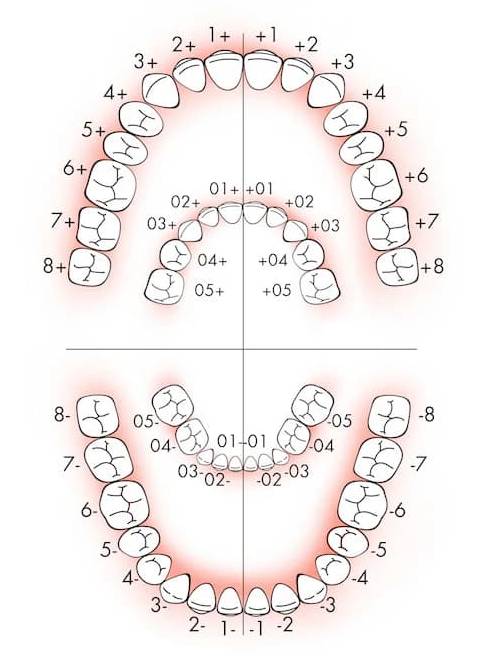
The numbering system allows you to organize information about the location of the teeth, which is extremely important when referring a patient to an x-ray or treatment to another specialist. Now you yourself will be able to understand what is written in your dental record.



